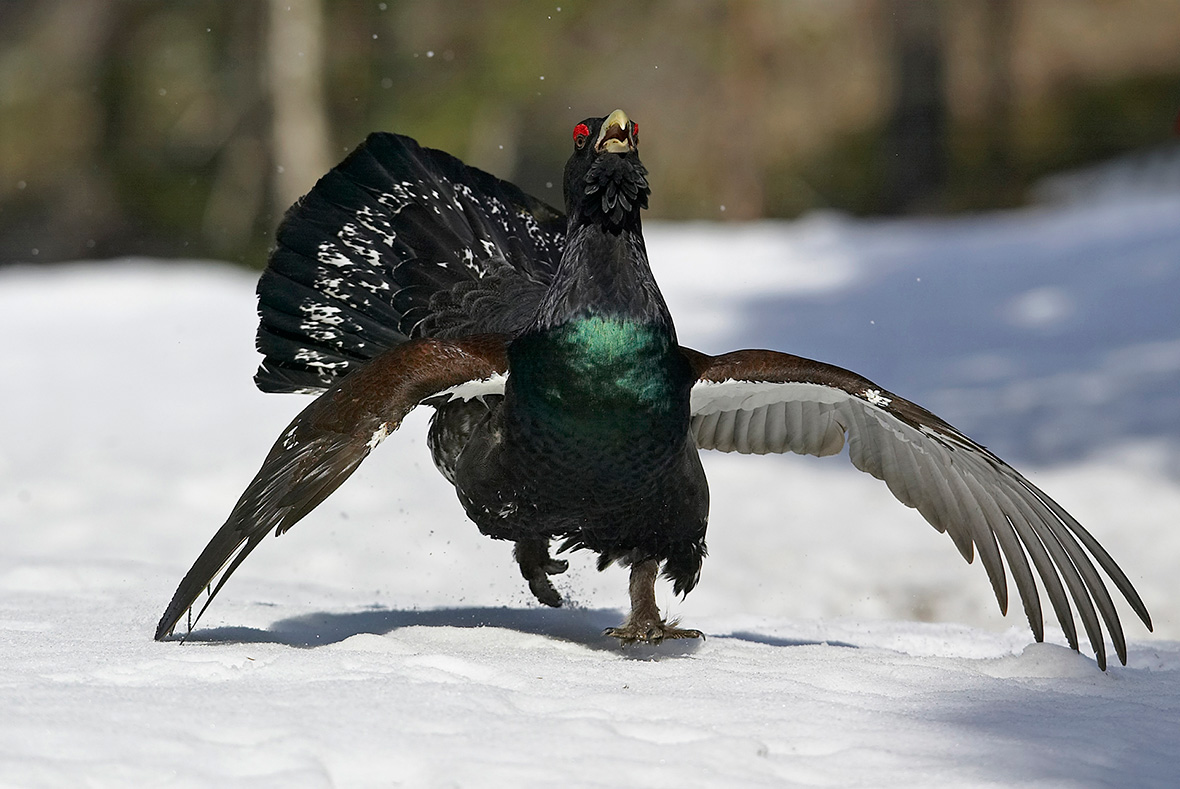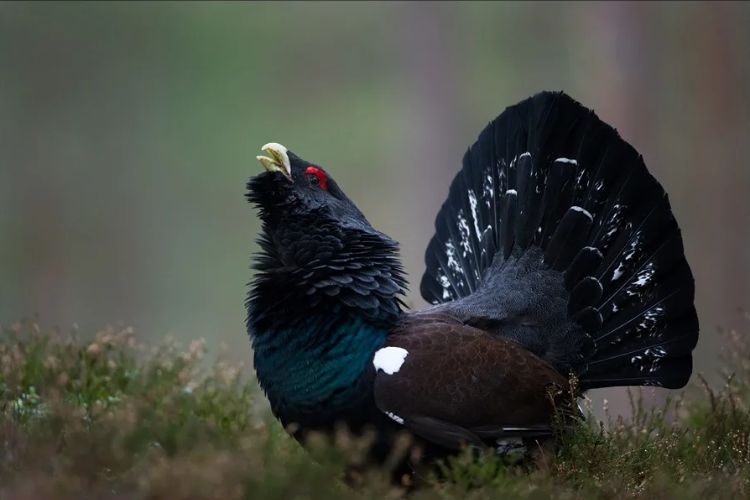The Western Capercaillie, also known as the wood grouse, is a large and striking bird native to the boreal forests of Europe and parts of Asia. Renowned for its impressive size, the males can weigh up to 4 kilograms and boast a wingspan of up to 125 centimeters. Their plumage is a stunning mix of iridescent greens, blues, and blacks, complemented by a distinctive white spot on the wing and a fan-shaped tail. Females are generally smaller and display more muted, brownish tones that provide excellent camouflage in their forest habitats.

One of the most fascinating aspects of the Western Capercaillie is its mating display, known as “lekking.” During the breeding season in spring, males gather in specific areas and perform elaborate displays to attract females. These displays include a combination of vocalizations, wing spreading, and tail fanning, often accompanied by a unique clicking sound. The males’ calls can be heard over long distances and play a crucial role in establishing dominance and attracting mates.


Despite their impressive displays and significant presence in their habitats, Western Capercaillies are facing various challenges that threaten their populations. Habitat loss due to deforestation, human disturbance, and climate change are major concerns.






Conservation efforts are crucial to preserving their natural habitats and ensuring the survival of this magnificent species. Initiatives include habitat restoration, legal protection, and research to better understand their ecology and behavior.